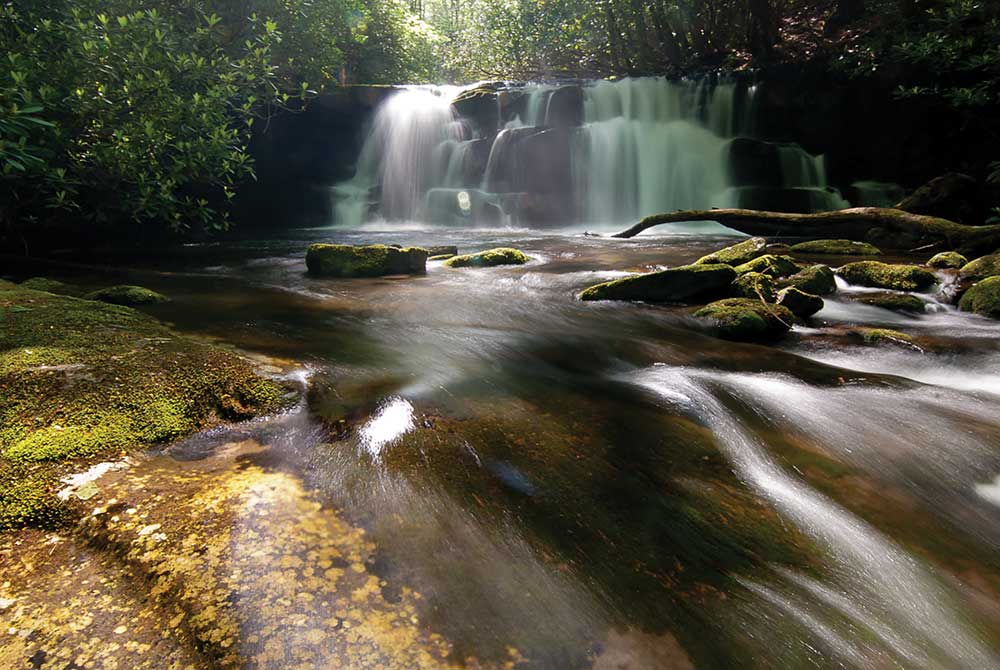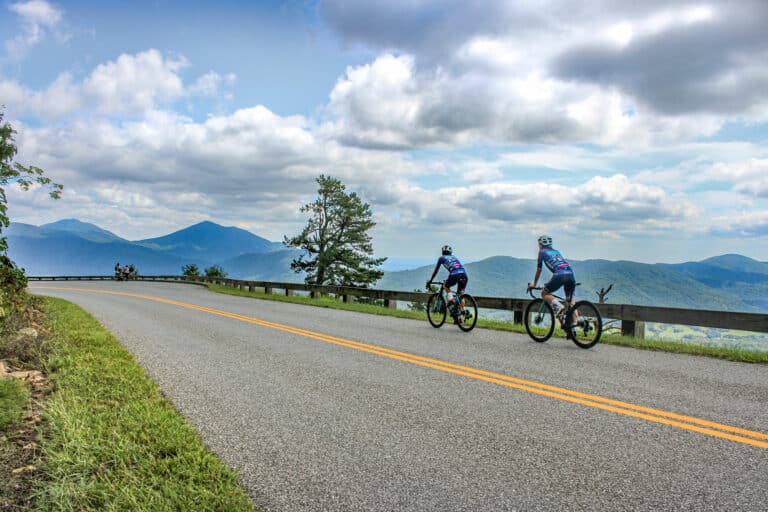Blue Ridge Communities Look Inward for Access to the Outdoors
When Lorenzo Rodriguez arrived in Big Stone Gap, Va. from California several years ago, he saw an opportunity. The community of 5,200 residents is surrounded by the Jefferson National Forest, and the Powell River flows right through downtown. “Coming from a big city, we would pay to go somewhere like this,” he says.
But there was a problem: organized recreation opportunities were few and far between. Rodriguez, now the co-owner of a cycling shop in town, couldn’t let that stand. “You have all these gems here, and I just felt like I had to say something.”
It turns out others had something to say, too. Since then, the town has seen outdoor opportunities blossom within its limits, thanks in part to The Gap Partnership, a coalition of residents and businessowners like Rodriguez. Big Stone Gap has revamped its existing parks, worked to promote a multi-use trail circling town, and hosted a number of events that feature the town’s outdoor assets. Plans are also in the works for what would be a premier trail system on town-owned property on nearby High Knob.
Now, the outdoor scene that Rodriguez and others envisioned has become a key part of Big Stone Gap’s identity. “It’s everything,” he says.
It’s tempting to see Big Stone Gap as just another rural community looking to the outdoors for new economic options. The town’s journey, though, could apply to Blue Ridge communities of all types that are looking within their municipal limits for access to trails, crags, and waterways. And even larger cities are getting in on the action. As one example, Johnson City, Tenn.—whose population is more than ten times that of Big Stone Gap—will soon open a mountain biking park near the heart of its downtown.
Locally-owned parks aren’t a new phenomenon in the Blue Ridge, but the southern mountains may be in the midst of the biggest expansion of locally-managed public lands in their history. What’s driving that effort?
For Kayla Carter, it all comes down to one word: regionalism. Carter is the outdoor development manager for the Northeast Tennessee Regional Economic Partnership, an organization formed to unite communities surrounding the Johnson City metro. Carter says that outdoor opportunities quickly rose to the forefront of the Partnership’s radar. “Outdoor development is one of the most sustainable and innovative approaches to economic development,” she explains, “because each community has its own unique assets.”
The eight-county region forming the core of the Partnership’s outdoor efforts is a flagship example for how explosive locally-based park development can become. Beyond Johnson City’s Tannery Knobs mountain biking park, nearby Erwin is expanding an existing multi-use trail towards the neighboring town of Unicoi. North of Erwin, Carter County has developed a Doe River Fishing Trail connecting the towns of Roan Mountain and Elizabethton. An effort is also underway to construct an in-town whitewater wave on the Watauga River. And that’s all occurring against the backdrop of established destinations like the Appalachian Trail, Rocky Fork State Park, and the Nolichucky River.
One risk of creating too many new parks too quickly is that communities might end up turning themselves into competitors, but Carter says organizations like the Partnership are helping prevent those issues through collaborative planning. “What we’re trying to accomplish is being a conduit and resource so we can bring the right partners and people together.” One such resource is an outdoor action plan that will help manage the region’s menagerie of parks sustainably.
Farther south, communities in Western North Carolina are developing new public lands with an added goal in mind: conservation. Recently, a coalition of local governments and nonprofits spearheaded the purchase of several hundred acres near Waterrock Knob, the latest piece in a growing mosaic of conservation lands across the rugged Plott Balsams. More than 400 of those acres will be transferred to the town of Sylva, where they’ll be used to expand hiking options at Sylva’s popular Pinnacle Park. Nearby, the Eastern Band of Cherokee is interested in expanding outdoor opportunities on a similar parcel.
Bill Holman is North Carolina director with The Conservation Fund, one of the partners that, along with community leaders and conservation trusts, helped purchase those properties. Holman says that communities’ shift towards developing their own outdoor destinations has aided conservation efforts across the Blue Ridge, explaining that if groups had been working in the Plott Balsams 25 years ago, success may have been harder to come by. “But now there’s very solid support by local governments,” he says. “There’s just a huge demand for outdoor recreation in Western North Carolina.”
While keeping up with that demand might ultimately mean more conflicts between recreational users and conservation efforts, Holman stresses that the region’s boom of new park development should bring positive outcomes in the short term. “If you want places protected, it’s important for people to see them so they love them and speak for them,” he says.
Carter agrees and emphasizes that developing communities sustainably also means having a long-term view of how to manage their parks. “We want to not only promote but protect those natural places for future generations.”
And ultimately, she says that all comes back to what’s at the core of the region’s growth in locally-managed parks, whether that growth is occurring in a booming metropolitan area or a rural community like Big Stone Gap. “It’s really the people in these communities that are making the most positive gains.”








